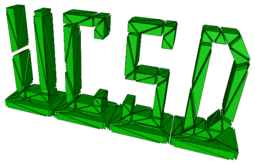| Michael Holst | ||
| https://ccom.ucsd.edu/~mholst/ |
Distinguished Professor of Mathematics and Physics UC San Diego |
|
|
Math 170B (Introduction to Numerical Analysis: Approximation and Nonlinear Equations)
Course Topics: Introduction to Numerical Analysis: Approximation and Nonlinear Equations Instructor: Prof. Michael Holst (5161 AP&M, mholst@ucsd.edu; Regular Office Hours: TBA) Term: Winter 2022 Lecture: 2:00p-2:50p MWF (See Canvas for Room, Zoom Links, other info) TA: See the Canvas Page Discussion: See the Canvas Page Main Class webpage: http://ccom.ucsd.edu/~mholst/teaching/ucsd/170b_w22/index.html Canvas/Zoom:
Also note that there are two different sections of 170B in Winter 2022 taught by two different instructors. Although 170ABC is not a "coordinated" course like some of the lower division courses, the two sections of 170B in Winter 2022 will use the same book, cover roughly the same material, go at roughly the same pace, and have the same general types of assessments throughout the quarter. Therefore, the student experience in each section of 170B should be fairly similar.
CATALOG DESCRIPTION: 170B. INTRODUCTION TO NUMERICAL ANALYSIS: APPROXIMATION AND NONLINEAR EQUATIONS (4) Rounding and discretization errors. Calculation of roots of polynomials and nonlinear equations. Interpolation. Approximation of functions. Knowledge of programming recommended. Prerequisites: Math 170A. Students who have not completed the listed prerequisites may enroll with consent of instructor. COURSE INFORMATION: Many of the advances of modern science have been made possible only through the sophisticated use of computer modeling. The mathematical foundation of the computer modeling techniques now used in all areas of mathematics, engineering, and science is known as numerical analysis. The Math 170ABC series at UCSD provides an introduction to the exciting field of numerical analysis, which is also sometimes referred to as computational mathematics or scientific computing. Professor Holst has a passion for this particular area of mathematics, and much of his published research is in this area. Math 170B deals primarily with the development and analysis of algorithms (or, numerical methods) for solving nonlinear equations and systems of nonlinear equations, and approximating functions, approximating derivatives of functions, and approximating integrals of functions. OTHER COURSE INFORMATION: Please see the Canvas page for other information about this course. |
